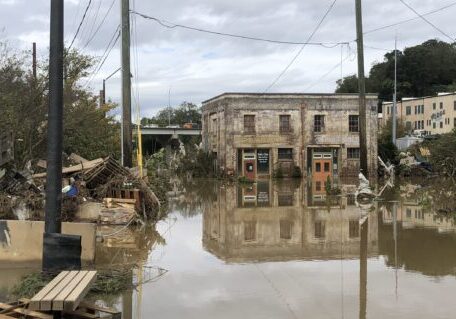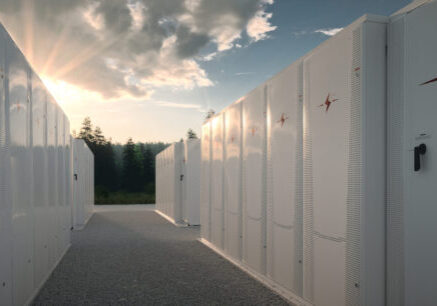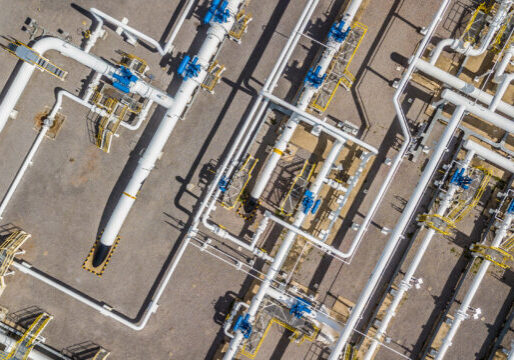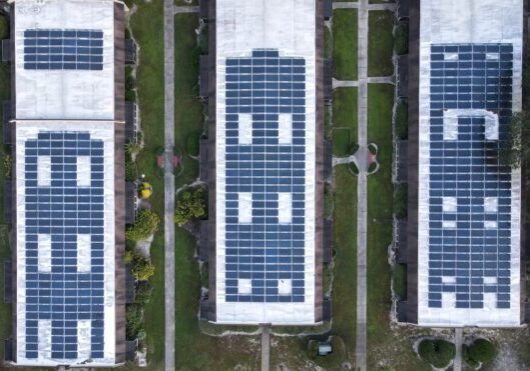November 14, 2016
Vermont Affordable Housing Development Sets New Standard for Resilient, Zero-Energy Homes
By Maria Blais Costello
The McKnight Lane Housing Development in Waltham, Vermont is doing what no affordable housing project has done before: It is offering rural, low-income tenants zero-energy, single-family housing that also includes resilient solar energy storage systems.
Solar PV paired with battery storage (solar+storage) is a relatively new technology application for housing, and though companies such as Tesla and Sonnen have recently made these systems available, usually wealthy households are the first adopters. Residential solar+storage systems that offer reduced pollution, back-up power, and cost-savings haven’t trickled down to families with modest means. But in Vermont, steps were taken by community leaders, affordable housing developers, NGOs, philanthropy, the state’s largest utility, an energy storage systems company, and a Vermont modular home manufacturer to show how these benefits can be accessed by low-income communities. The McKnight Lane development is unique and important because it shows that solar+storage systems are ready for deployment in affordable housing today.
Project Summary
The McKnight Lane Housing Development came together thanks to the collaboration of organizations from across Vermont, led by the project developers, Addison County Community Trust and Cathedral Square. With additional contributions to the project by community development agencies, philanthropy, industry, finance entities, government agencies, and nonprofit organizations, expertise was leveraged and more than $3.6 million was raised to cover development costs, which included site cleanup, the new infrastructure, and fourteen customized, zero energy, single-family modular homes with rooftop solar PV systems. Additional funding of $130,000 was raised to help cover the purchase of the energy storage systems for added resiliency and cost savings.
The tenants of the duplex-modular homes have access to the some of the most advanced clean energy housing available anywhere. The VERMOD modular homes were designed to be so energy efficient that with the addition of the solar panels, the electricity cost for the homes is expected to be zero over the course of a year, even though the home’s heating, cooling, ventilation systems, and all major appliances are powered by electricity. The rent for the homes is below market, and the housing will serve families below 60 percent of area median income; and the rent will include electricity.
Tenants will also receive the benefits of resilient power with the inclusion of Sonnen smart solar energy storage systems, in addition to the 6-kW solar PV panels installed on each home. The combination of solar PV and energy storage systems will enhance each home’s energy performance and provide emergency backup power during a power outage. So while other homes may be in the dark, McKnight Lane residents will have power to keep them safe.
What is Energy Storage?
Simply put, energy storage is an electric system that uses high-capacity batteries with other system components to store power generated from the solar PV panels for use when it is needed, like at night or during a power outage when the electricity grid can no longer supply the home with power.
How does it Work?
When the electricity grid is up and running, the solar+storage system functions similarly to a regular solar PV system: meeting the home’s electricity demand, sending excess electricity generated by the PV panels to the grid, and drawing electricity from the grid, if needed, to power the home.
The solar+storage system in each home is designed to be fully operational with no action needed from the tenants. The systems are monitored electronically by electric utility Green Mountain Power and battery manufacturer Sonnen, and maintained by the Addison County Community Trust. The solar+storage systems will automatically shut down if there are any critical errors. So, unlike some energy efficiency measures, tenants do not need to do anything to get the full benefits from the solar+storage system.
What Happens during a Power Outage?
Unlike solar-only installations, solar+storage systems can continue to provide backup power to the home when the grid is down.
When the energy storage system’s automatic transfer switch detects a power outage, the solar+storage system will disconnect from the grid. This is done so that electricity that might be coming from the PV panels will not enter the grid and cause harm to anyone repairing the power lines.
Once the system disconnects from the grid, it can provide emergency back-up power to the McKnight Lane tenants until grid power is restored. The electricity stored in the batteries will be used to power essential appliances, the ventilation system and the heating and cooling systems. And during longer power outages, the solar panels will recharge the batteries whenever the sun is shining. The energy storage system can provide at least six hours of back-up power to the home without recharging.
When the sensors in the automatic transfer switch detect that the grid power has been restored, the switch connects the main service panel back to the utility grid after five minutes of stable grid power. All of this will happen automatically. The batteries will be re-charged by grid power if the solar panels are not generating electricity during the night, or by the solar panels if the sun is shining, ready to provide clean, resilient power again if needed.
What are the Other Benefits of the Solar+Storage System?
In addition to providing resilient power to the McKnight Lane residents, the energy storage systems will also be used by Green Mountain Power to provide peak load reduction and demand response, grid services that will save money for the utility’s ratepayers. The McKnight Lane project will demonstrate how solar energy storage systems can improve the safety, reliability, and performance of the grid, and also deliver cost savings to its customers.
Clean Energy Group and the Clean Energy States Alliance will be working with the energy storage system supplier, Sonnen, and Green Mountain Power to collect performance data on the energy storage systems and provide system optimization analysis. Once the data is in, both organizations will work with stakeholders to replicate this project in Vermont and throughout the Northeast.
Read more about the McKnight Lane project on our Featured Installation page, and on our press page. Clean Energy Group is working on similar projects across the country through its Resilient Power Project. More information can be found at www.resilient-power.org.
***
This blog was also posted on Renewable Energy World.














